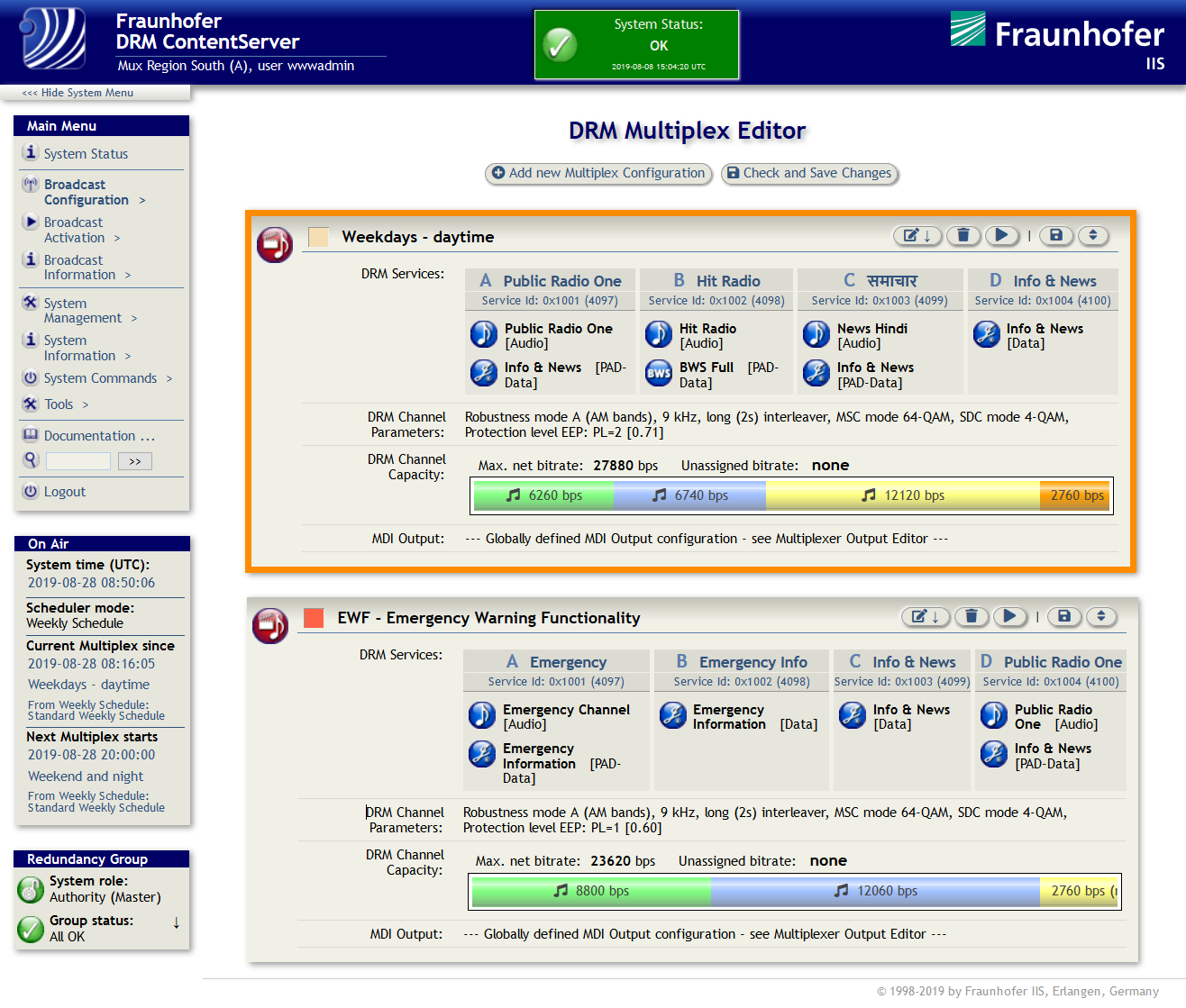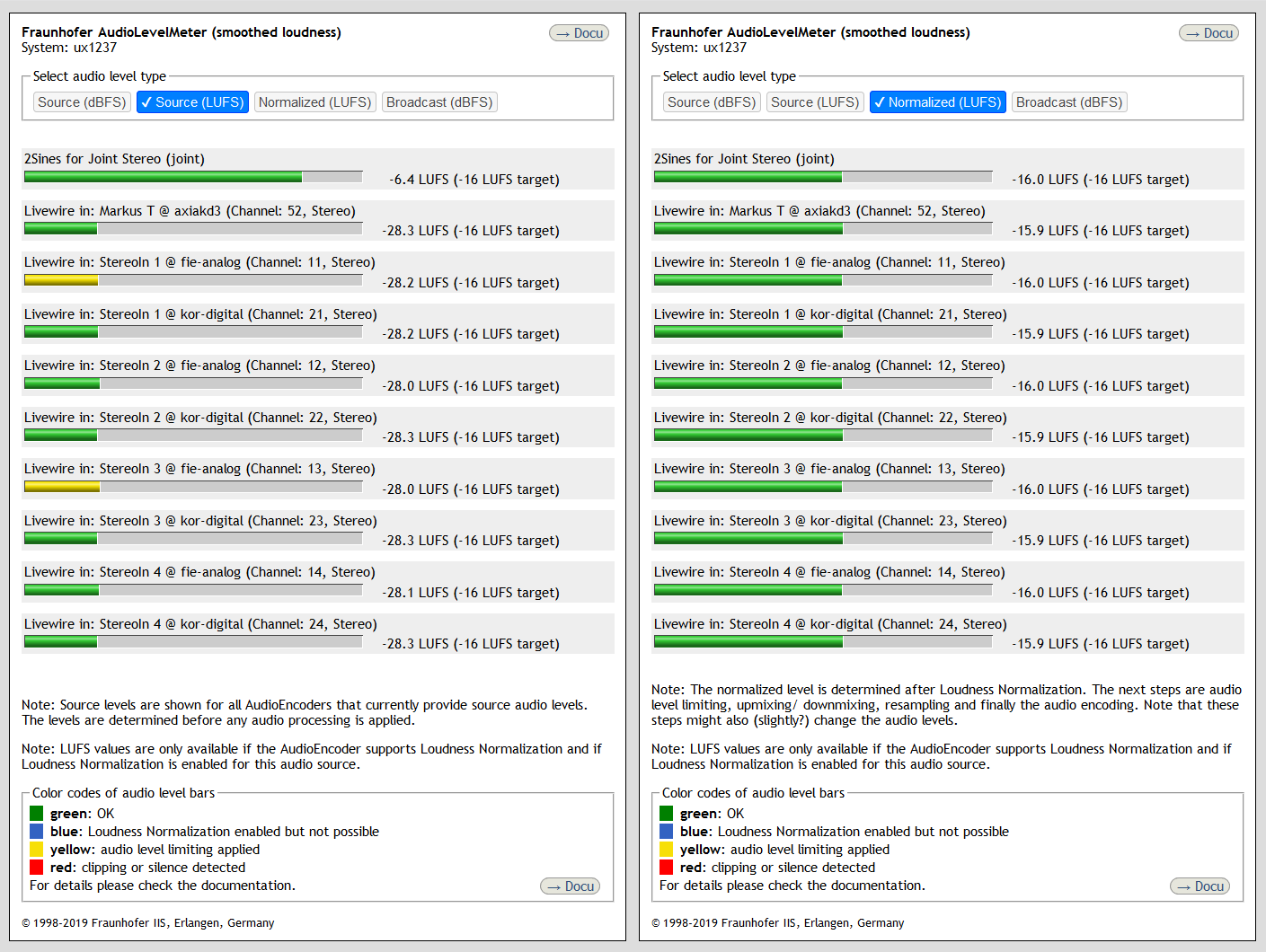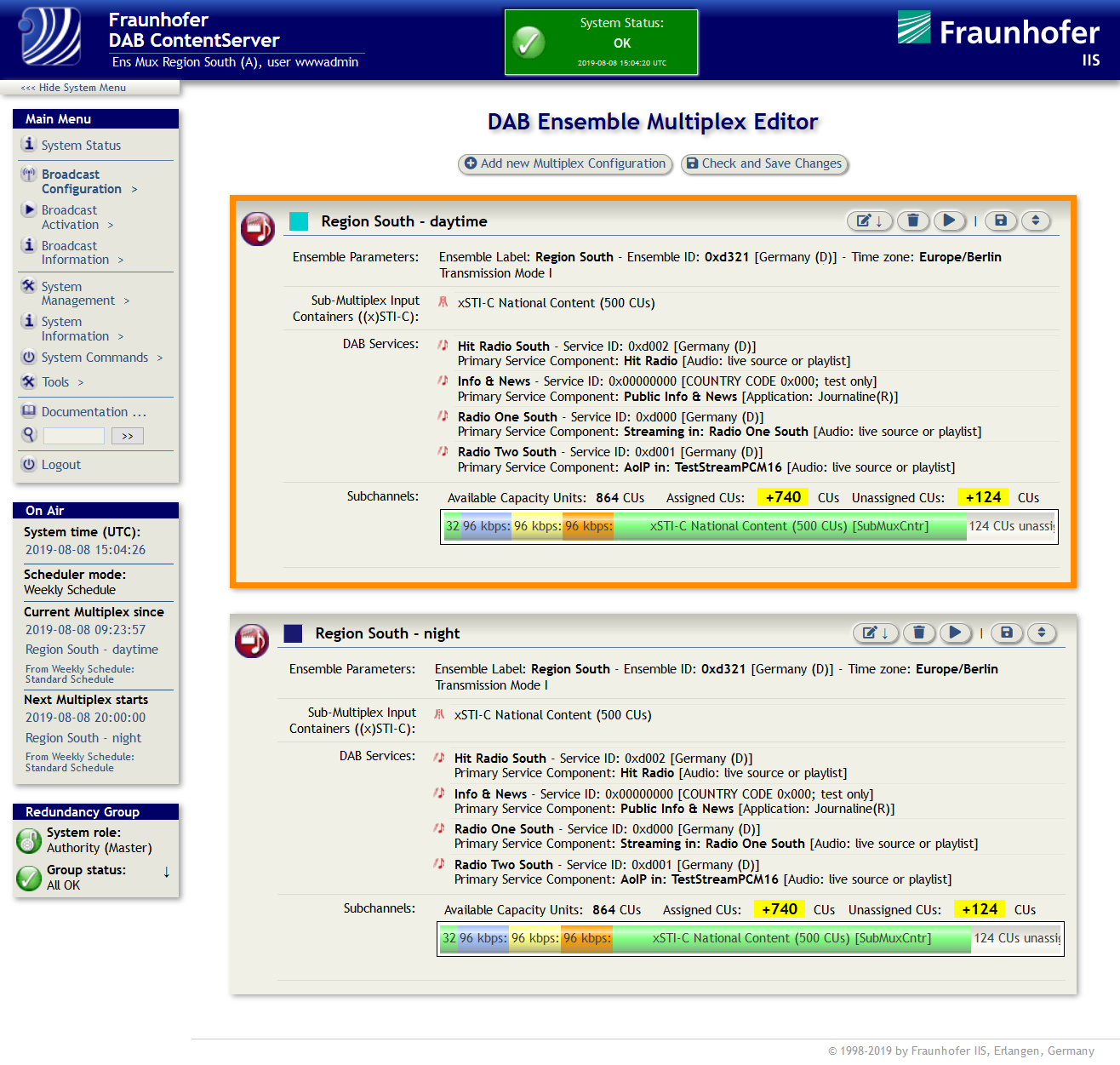Fraunhofer IIS ContentServer R7 digital radio head-end technology for DAB+ and DRM now available
ERLANGEN, Germany: Fraunhofer IIS introduces the latest major release of its professional ContentServer head-end technology for Digital Radio DAB+ and DRM (Digital Radio Mondiale): Version R7 of this flexible and highly reliable solution is now readily available in products from Fraunhofer’s OEM partners. The new DAB/DRM ContentServer R7 enables broadcasters to put audio content and attractive data services on air with ease while benefitting from the latest standard upgrades and a range of new productivity features.



New features that come with the Fraunhofer DAB/DRM ContentServer R7 include, for instance, automatic Audio Loudness Normalization and Monitoring as well as additional IP-based Audio Streaming Source Interfaces.
The Content Server’s internal audio encoders now support loudness normalization that amplifies or attenuates the incoming audio to obtain and maintain the target loudness level specified in Loudness Units relative to Full Scale (LUFS). This feature is based on Fraunhofer Sonamic technology and is especially useful if the loudness of all audio services within the generated multiplex should be the same or if an audio source provides audio at varying loudness levels.
Additional input interfaces for IP-based audio sources now comprise Livewire/Ravenna /AES-67-based raw audio streams as well as consumer-type Icecast/SHOUTcast streams. The ContentServer can also serve as an end point for RTP-based audio bridges to accept uncompressed or compressed (e.g. AAC) audio streams without the need for external devices. Audio level monitoring, audio source remote listening through HTML5 browsers and silence/clipping detection are supported, while powerful concealment strategies minimize the impact of packet losses on the contribution network.
In addition, the ContentServer R7 includes the following new functionalities:
• Interactive graphical system status overview: shows the status of all system components in a schematic graphic overview, with direct links to the relevant documentation, logging and editor pages.
• EWF with CAP import: EWF (Emergency Warning Functionality) is the early warning dissemination mechanism for both DAB and DRM. It consists of alarm signaling plus an emergency program broadcast composed of an audio announcement and multi-lingual Journaline text. The standardized Common Alerting Protocol (CAP) or its derivatives (such as MoWaS in Germany) are used to distribute emergency warnings from a central authority to the broadcasters. The ContentServer R7 now has a native CAP import interface and automatically creates the EWF alarm announcements and EWF program content for DAB/DRM transmissions.
• JSON/XML RPC management and data interfaces: remote procedure calls (RPC) based on JSON (JavaScript object notation)/XML (extensible markup language) enable modern configuration and monitoring, announcement and reconfiguration triggers, linkage set activations as well as instant provision of content updates such as Dynamic Label/Text Messages, Journaline text pages and Slideshow images to the ContentServer.
• Audio Cross-Redundancy: Deploying a new Smart Silence Detection technology, it ensures perfectly valid multiplex outputs from all ContentServers of a redundancy group even if a live audio input source fails. This new feature enhances the existing Backup Audio Encoding functionality, which allows to define backup audio sources such as pre-uploaded file sets to serve as a ‘last resort’ in case of fully failing audio live inputs.
• EDI Switch for DAB: this built-in feature ensures that all peers in a ContentServer redundancy group output the identical multiplex data stream to downstream devices via EDI (the IP-based distribution protocol from DAB multiplexers to DAB modulators/transmitters).
• Localized multiplex output: allows multiple small-scale DAB multiplexes to be generated by a single ContentServer to enable low-cost DAB setups, for example.
• Automatic creation of playlists as Journaline pages: the list of recently played songs is derived from the Dynamic Label Plus information and accessible to the listener through Journaline.
• DAB V2.1.1 compliance: full support of DAB(+) versions V1.4.1 and V2.1.1 including OE (other ensembles) announcements, test (OE) alarm announcements and service component information (SCI). Correspondingly, Fraunhofer’s SDR based DAB receiver solutions are now also DAB 2.1.1 compliant.
• Stream monitoring: powerful tools to analyze and monitor incoming audio and Distribution and Communication Protocol (DCP)-based streams.
The Fraunhofer ContentServer R7 technology is available as part of Fraunhofer OEM partners’ head-end solutions for DAB+ and DRM broadcasting, as well as for receiver development and testing. Fraunhofer’s OEM partners also provide hardware, assistance with integrating the technology into virtual and cloud-based environments, and support services.
Visitors to the IBC show can experience the new features of the ContentServer R7 firsthand at Fraunhofer’s booth B.80 in hall 8 at the RAI Congress Center in Amsterdam, September 13–17, 2019, and at the booths of Fraunhofer’s OEM partners:
• RFmondial – hall 8, booth A.43 and booth C.49
• IZT – hall 8, booth A.68
• Nautel – hall 8, booth C.49
• Plisch – hall 8, booth D.32
• GatesAir – hall 8, booth D.60
• AVT – hall 8, booth E.76
• Dimetis – hall 1, booth B.30
• Gospell – hall 3, booth C.67
About the Fraunhofer ContentServer technology
Fraunhofer’s ContentServer technology combines internal audio coding (including MPEG xHE-AAC audio coding for DRM, enabling the definition of backup audio sources), support for remote audio encoders, multimedia data management and multiplex generation with powerful redundancy features that work across remote sites. A convenient and user-friendly web interface supports configuration and system monitoring via remote access, enabling content-as-a-service operation scenarios. Its flexible configuration and out-of-the-box support for a large number of versatile interfaces for audio and content provision allows for straightforward integration into broadcasters’ and network providers’ broadcasting environments – from small-scale community stations all the way to large-scale and complex national networks.
DAB’s Service Multiplexer concept of remotely generated sub-multiplexes with STI-C and xSTI-C (Fraunhofer’s Extended STI-C) is supported, enabling the Service Multiplex operator to carry out autonomous and flexible configurations and dynamic reconfigurations – even when inserting their sub-multiplex into a range of regionalized, otherwise independently configured ensemble multiplexers.
The ContentServer supports all standardized DAB+ and DRM data applications such as Text Messages/Dynamic Label and Dynamic Label Plus (DL+), Journaline, Slideshow, SPI/EPG including station logo transmission, and EWF. In addition, it is possible to insert proprietary data at various levels of the DAB/DRM protocol stack. All uploaded data is checked and broadcast only if successfully verified.
Typically located in the studio, playout center, transmitter site, or within dedicated network provider premises, the ContentServer enables full remote control for administration and data provision. In-house live audio and multimedia content monitoring is provided by the DAB/DRM MultimediaPlayer that runs, for example, on a central Windows/Linux PC, with remote access via an HTML5 web browser from any workstation PC. At the other end of the transmission chain, receiver manufacturers benefit from the solution’s ability to achieve almost 100% test coverage with regard to signaling, audio configurations, data services and multiplexing options when operated in its specialized “Developer Edition”.
More information on Fraunhofer’s ContentServer technology: http://www.iis.fraunhofer.de/broadcast